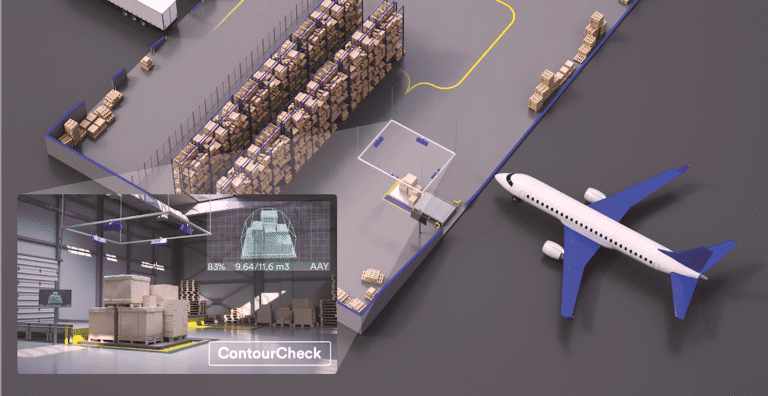- Automated cargo measurement: CIND Dimensioner uses AI and stereo cameras to capture real-time dimensions, volume, weight, and barcodes of palletised goods, reducing manual labour and ensuring consistent accuracy.
- 3D visual feedback for airfreight: ContourCheck provides live 3D models of pallets during build-up, verifying contour compliance, improving load factors by up to 10 percent and supporting audits and claims with image documentation.
- Scalable, sustainable logistics: CIND’s modular, software-driven systems integrate with partners like Cargo-Planner to optimize packing, enhance efficiency, reduce wasted space, lower costs, and support environmentally friendly operations.
Logistics providers have long grappled with the limitations of manual cargo measurement: inconsistent data, labour-intensive processes, and delays in throughput.
“Using computer vision and AI, we provide real-time, fully automated data capture of critical cargo data. This ensures consistent accuracy—systems don’t have ‘off’ days—while also drastically reducing manual labour,” Johan Sunnåker, Sales & Marketing at CIND, said.
CIND Dimensioner is a stereo camera system that scans palletised goods in motion, measuring dimensions, volume, weight, and even reading barcodes in real time. “It captures length, width, height, volume, weight, and barcode data while pallets are in motion. Each cargo passage is documented by capturing images, providing a visual record for audits or claims handling.”
3D visual feedback
For airfreight operations, the CIND ContourCheck solution is helping logistics teams make smarter, faster build-up decisions.
“It displays a real-time 3D model of the pallet as it is being built and continuously compares it against the specific contour selected,” Sunnåker explained. “The system provides immediate visual feedback, clearly indicating whether the load conforms to the airline’s contour specifications.”
ContourCheck also measures volume utilisation, helping handlers improve load factors and reduce waste. “To ensure traceability and quality assurance, each completed build-up is automatically documented by capturing images when the build is closed, providing a visual record for operational reviews, audits, or claims handling.”
The results are measurable. “Our ContourCheck tool has been shown to improve airfreight load factors by up to 10 percent. That translates directly into fewer flights, lower costs, and improved sustainability.”
Smarter logistics
With supply chain disruption and labour shortages impacting the sector, CIND’s focus is on seamless automation that scales with need. “Our technology works with partners like Cargo-Planner to create end-to-end solutions,” Sunnåker stated. “CIND Dimensioner handles inbound pallet measurement, Cargo-Planner optimises packing, and ContourCheck ensures quality control. This interconnected approach boosts efficiency without disrupting existing workflows.”
And the technology is adaptable. “Our systems are software-driven, which means we can roll out new features without needing to change hardware,” Sunnåker explained. “This makes our solutions highly scalable and adaptable to shifting demands or new use cases.”
The feedback from clients has shaped this modularity. “We work closely with our customers and develop our products in direct collaboration with them. This tight feedback loop ensures our technology remains aligned with real-world needs and continuously evolves.”
Sustainable, data-driven
As environmental concerns reshape the global logistics landscape, CIND Solutions is pushing forward with technologies designed not just for speed and efficiency, but for sustainability.
“With fuel and energy costs rising, our solutions help logistics providers move goods more efficiently—like reducing airfreight volume by 10 percent. Less wasted space means fewer trucks and/or planes are needed,” Sunnåker emphasised.
Meanwhile, CIND’s image-based documentation and real-time visibility support more accurate planning and reduce losses. “Computer vision, combined with our AI technologies, offers real-time in-motion measurements at a fraction of the hardware cost,” Sunnåker noted. “They deliver digital reports with actual images of the cargo, providing full transparency and traceability.”





